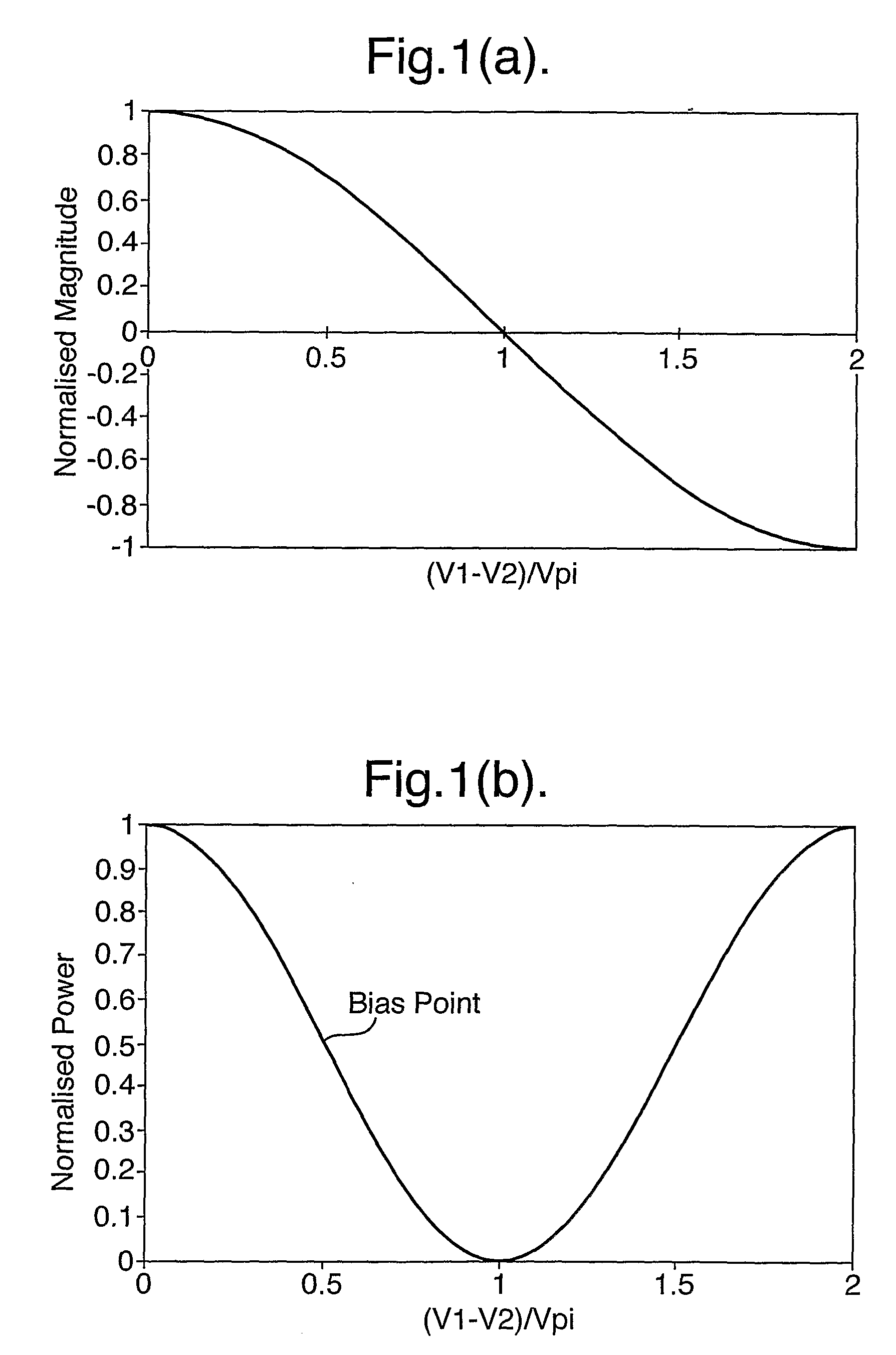Method and Apparatus for Producing High Extinction Ratio Data Modulation Formats
- Summary
- Abstract
- Description
- Claims
- Application Information
AI Technical Summary
Benefits of technology
Problems solved by technology
Method used
Image
Examples
Embodiment Construction
[0037]FIG. 1a illustrates the electrical field transfer function of a typical x-cut zero-chirp Lithium Niobate Mach-Zehnder (MZ) modulator. The applied voltage is shown on the x-axis as a normalised difference between the voltage applied to the two arms of the modulator, and the resultant electrical field output is shown as a normalised value on the y-axis. The x-axis is divided into units of V1-V2 / Vpi, where V1 is the voltage applied to a first arm of the modulator, V2 is the voltage applied to the other arm of the modulator and Vpi is the voltage difference between V1 and V2 required to give rise to a phase shift of 180° i.e. destructive interference at the output and hence zero electric field. The units of the y-axis are normalised by the maximum electric field at the output.
[0038]FIG. 1b shows the power transfer function corresponding to the square of the electrical field transfer function of FIG. 1a. The typical constant bias point about which the modulator is driven is indica...
PUM
 Login to View More
Login to View More Abstract
Description
Claims
Application Information
 Login to View More
Login to View More - R&D
- Intellectual Property
- Life Sciences
- Materials
- Tech Scout
- Unparalleled Data Quality
- Higher Quality Content
- 60% Fewer Hallucinations
Browse by: Latest US Patents, China's latest patents, Technical Efficacy Thesaurus, Application Domain, Technology Topic, Popular Technical Reports.
© 2025 PatSnap. All rights reserved.Legal|Privacy policy|Modern Slavery Act Transparency Statement|Sitemap|About US| Contact US: help@patsnap.com



